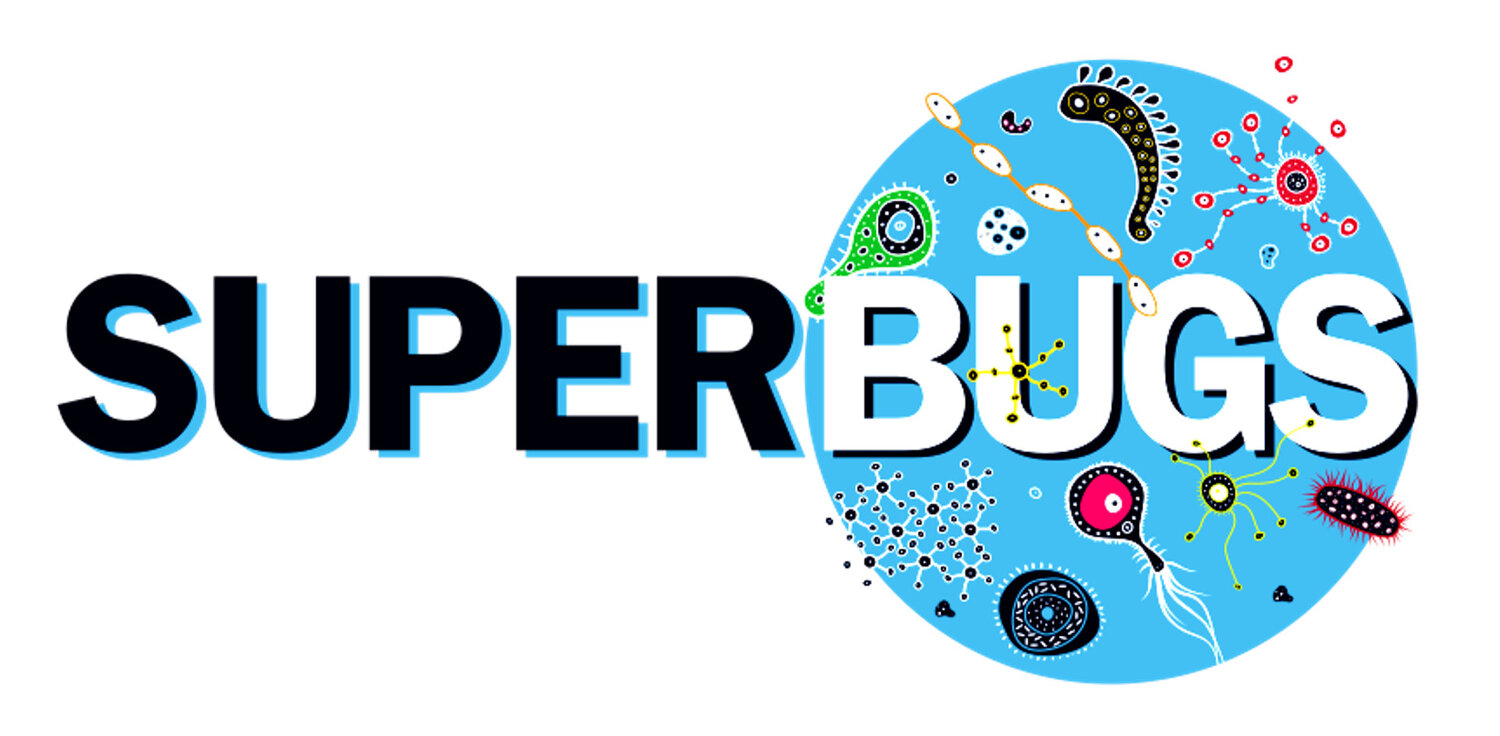Microbial Christmas 🎄
Festive agar plates from across the internet
The diversity in microbes is breath-taking. Individual cells may not look like much under the microscope - they are just too tiny. But when they form visible colonies on agar plates many bacteria and moulds grow in the most staggering display of colours and shapes. 🧫
And most scientists are generally creative and curious people. Sometimes they need a bit of compensation for the pressures and frustrations of their daily work in the lab. Sometimes they just like to play.
Plus, everyone loves a bit of Christmas!
Which is why we are posting here a selection of the most stunning microbial agar art we could find on the internet.
Click on the photos to learn more about the people and/or the germs behind these images!
🎅🦌
And please post your own photos in the comment section below or on Bluesky #MicrobialChristmas @superbugs.bsky.social.
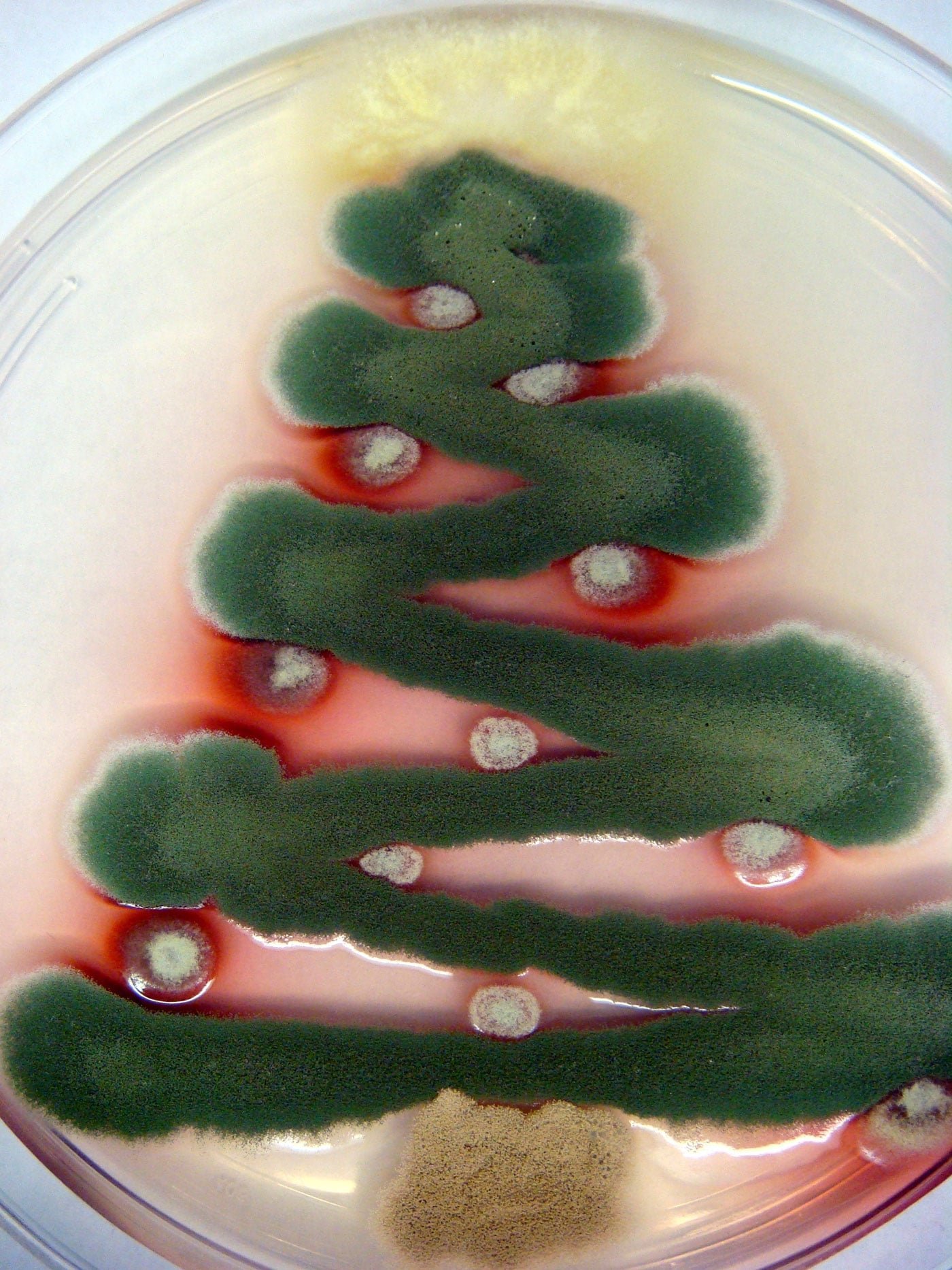
Fungal Christmas tree. Top: Talaromyces stipitatus; Tree: Aspergillus nidulans; Ornaments: Penicillium marneffei; Trunk: Aspergillus terreus.
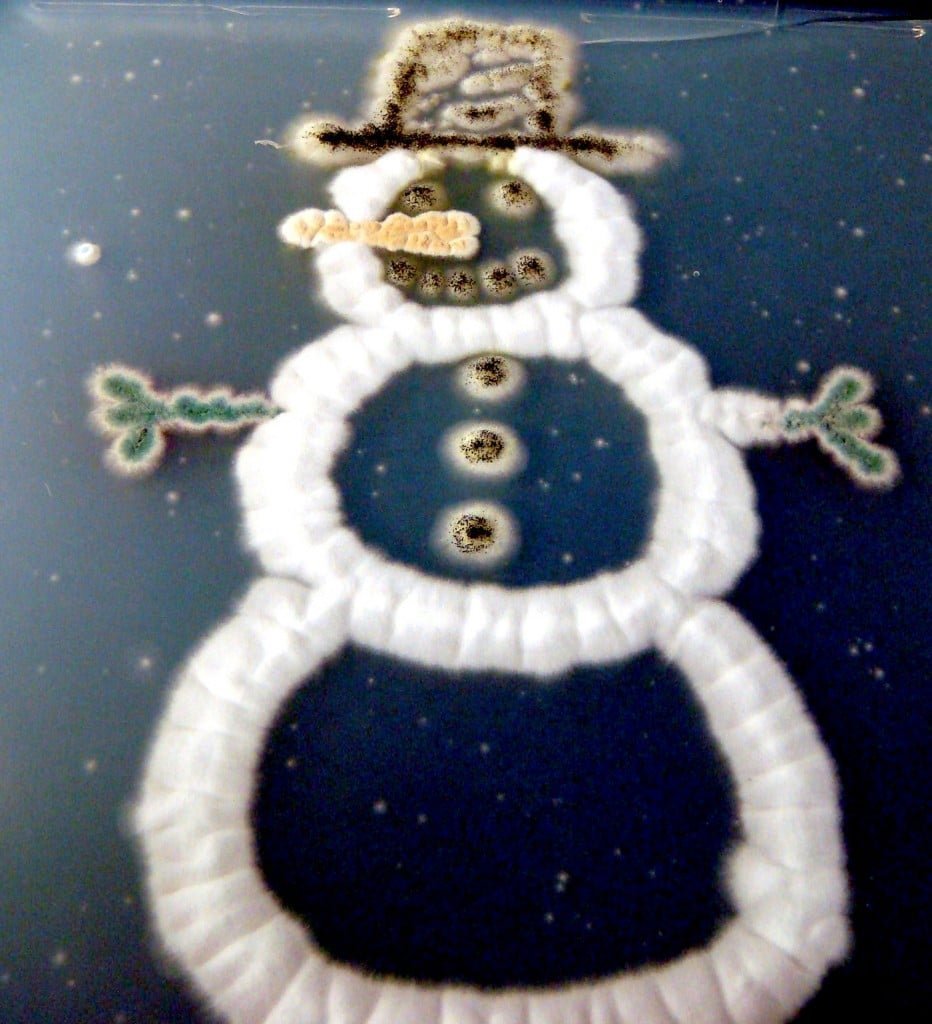
Fungal snowman. Hat, Eyes, Mouth, Buttons: Aspergillus niger; Arms: Aspergillus nidulans; Nose: Aspergillus terreus with Penicillium marneffei; Body: Neosartorya fischeri.
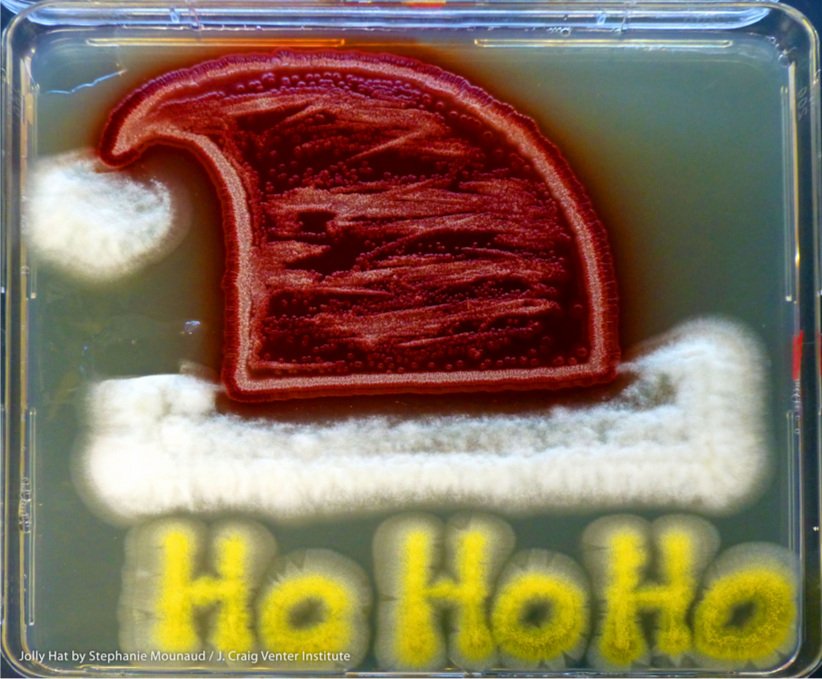
Brim and ball: Neosartorya fischeri; Hat: Penicillium marneffei; Ho,Ho,Ho: Aspergillus flavus.
Image Credit: Stephanie Mounaud / J. Craig Venter Institute.
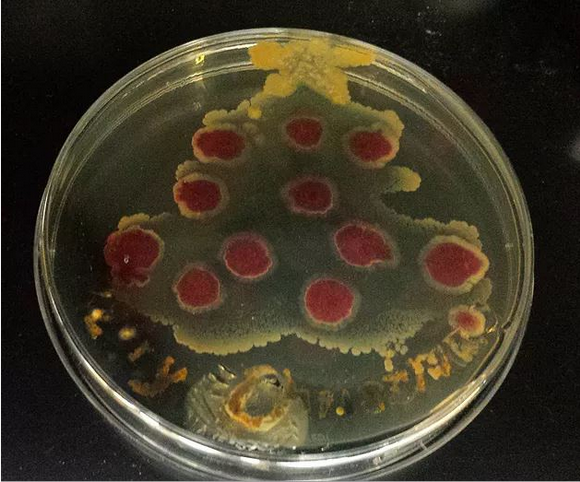
Christmas Tree: Synechocystis sp. PCC 6803. Cyanobacteria are usually green due to photosynthesis but here it seems that the presence of a lot of glucose (food) lead the strain to turn slightly yellow.
Christmas Baubles: Streptomyces spp. Streptomyces are actinobacteria and the natural source of many antibiotics e.g. streptomycin, tetracycline or chloramphenicol.
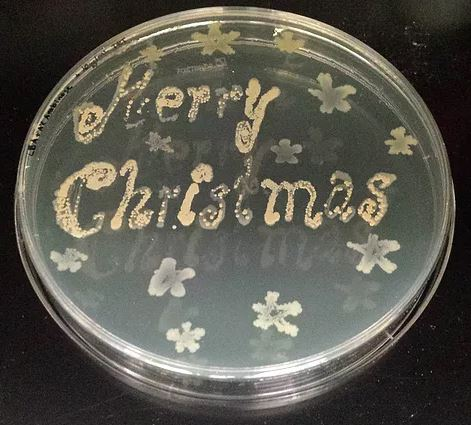
Merry Christmas: E. coli MG1655. E. coli is the most commonly used model organism in microbiology.
Stars: E. coli MG25113. This strain is genetically altered and contains GFP (green fluorescent protein). The addition of arabinose induces the expression of GFP.
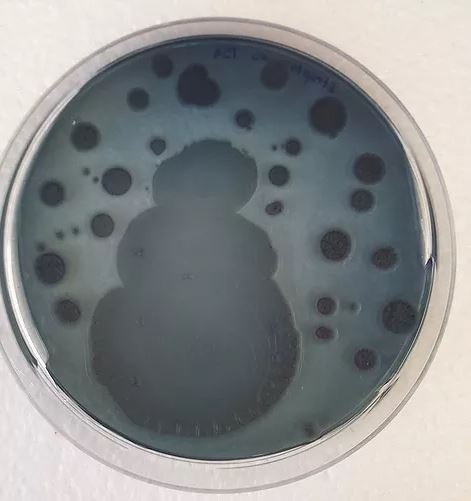
Snowman: Streptomyces coelicolor M145. This Streptomyces produces the antibiotic actinorhodin which diffuses into the agar and dyes it blue. At prolonged incubation, the cells will start to produce spores as a survival mechanism, which would turn the snowman white.
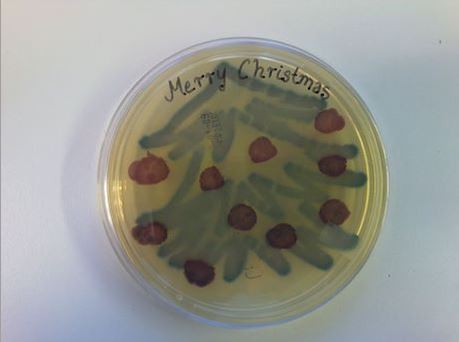
Christmas Tree: Klebsiella pneumoniae. An opportunistic pathogen that causes urinary or respiratory tract infections and is often transmitted via hospital equipment or staff. Many strains also have a multitude of antibiotic resistances. The patients from which the strains were isolated suffered from reoccurring bacteremia (blood infection).
Christmas baubles: E. coli. The strain here is not a model organism from the lab but a blood isolate from the hospital. Some pathogenic strains of the otherwise harmless species E. coli can cause very severe conditions. Often they are multi-resistant.
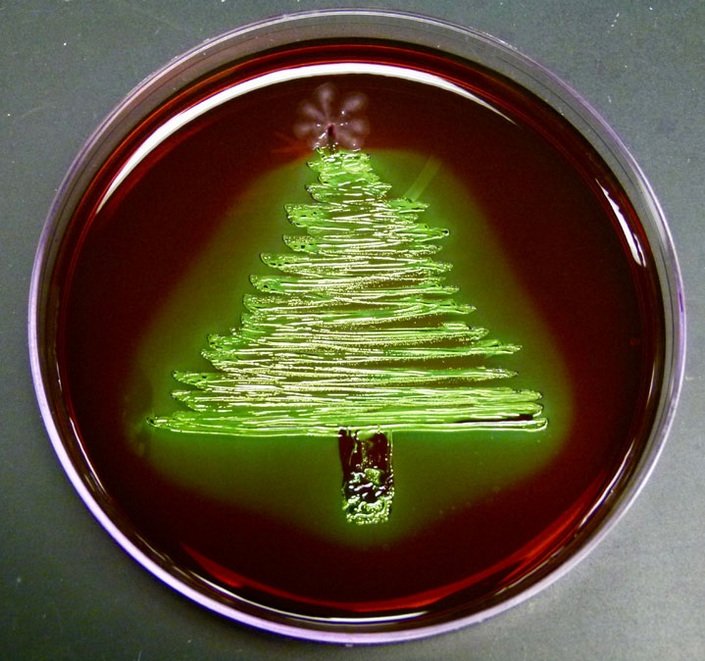
Tree: Escherichia coli tree with Klebsiella pneumoniae trunk and Bacillus subtilis star. Grown on Eosin Methylene Blue (EMB) agar at 37°C for 20 hours.
By Gina Lee
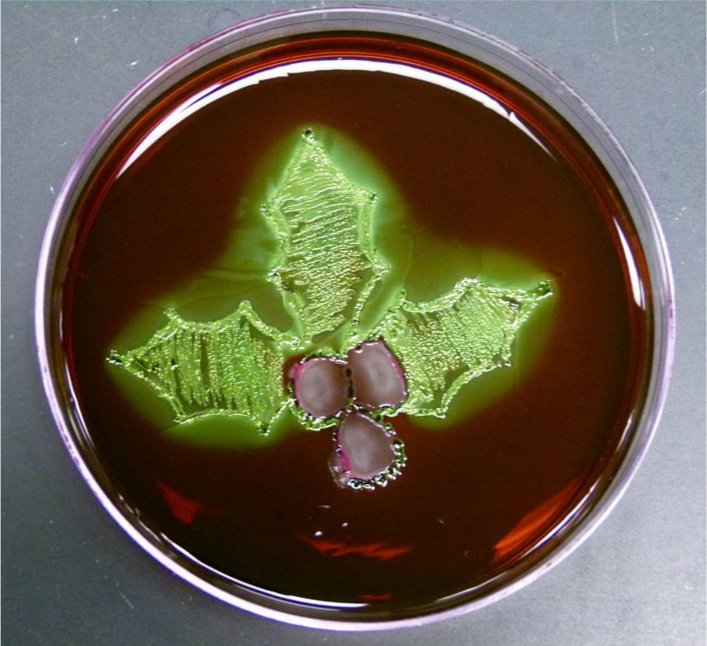
Holly: Escherichia coli leaves with Pseudomonas aeruginosa berries. Grown on EMB agar at 37°C for 20 hours.
By Jennifer Pitt
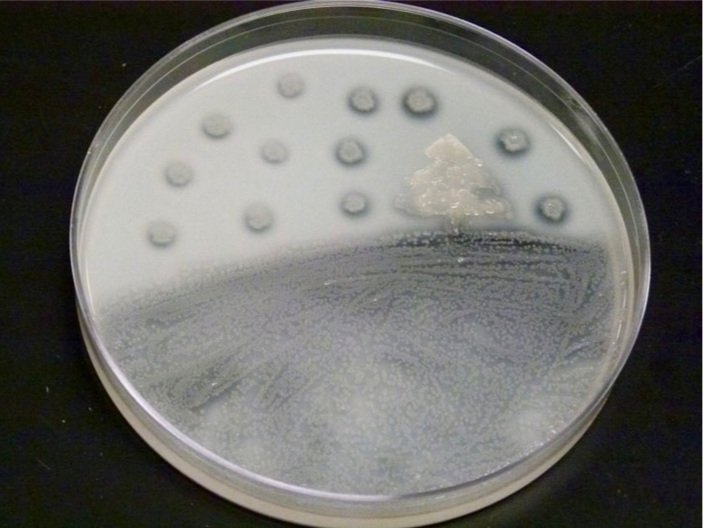
Snow scene: Bacillus subtilis snow with Micrococcus roseus tree grown on milk agar plate at 37°C for 42 hours.
By Gina Lee
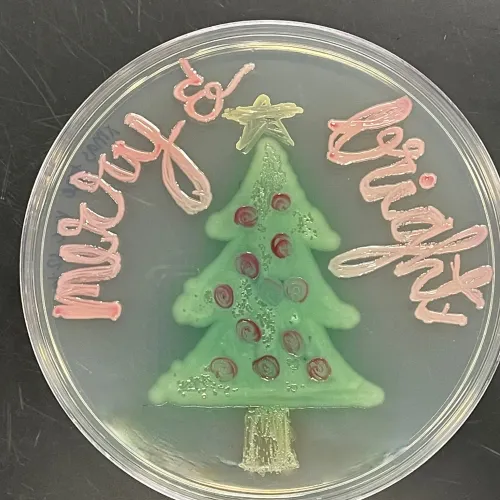
Christmas Tree (green = Pseudomonas aeruginosa, red = Serratia marcesens, yellow = Staphylococcus aureus).
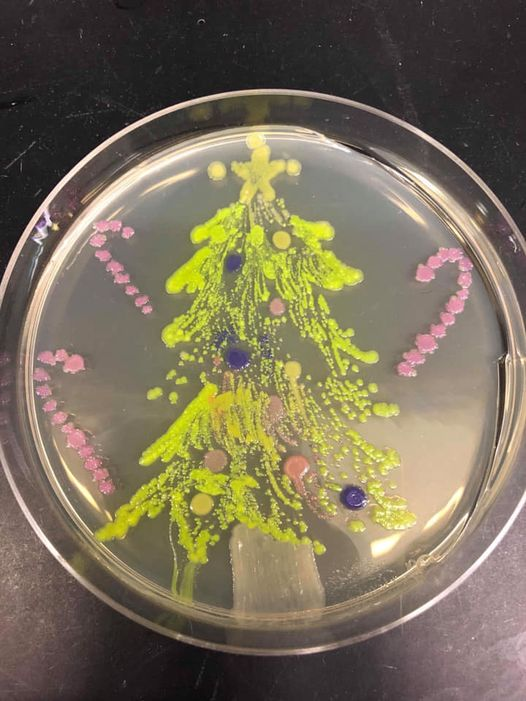
"Plating ourselves a Christmas tree
In our Christmas party lab
Colonies grown so you can see
Every microbe streaked and stabbed"
Artist: Angel Nong
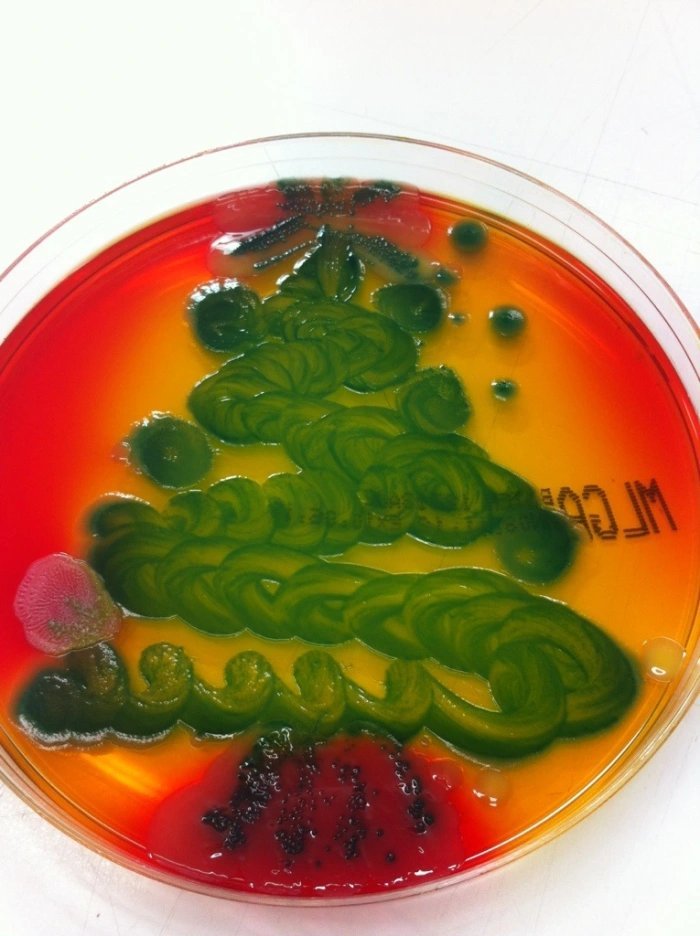
Bacteria tree on chromogenic agar plate. The green foliage is E. coli, the pink baubles are Pseudomonas aeruginosa, and the star and tree trunk are Enterobacter cloacae. But with the E. coli being motile, it has invaded the star, trunk and balls.
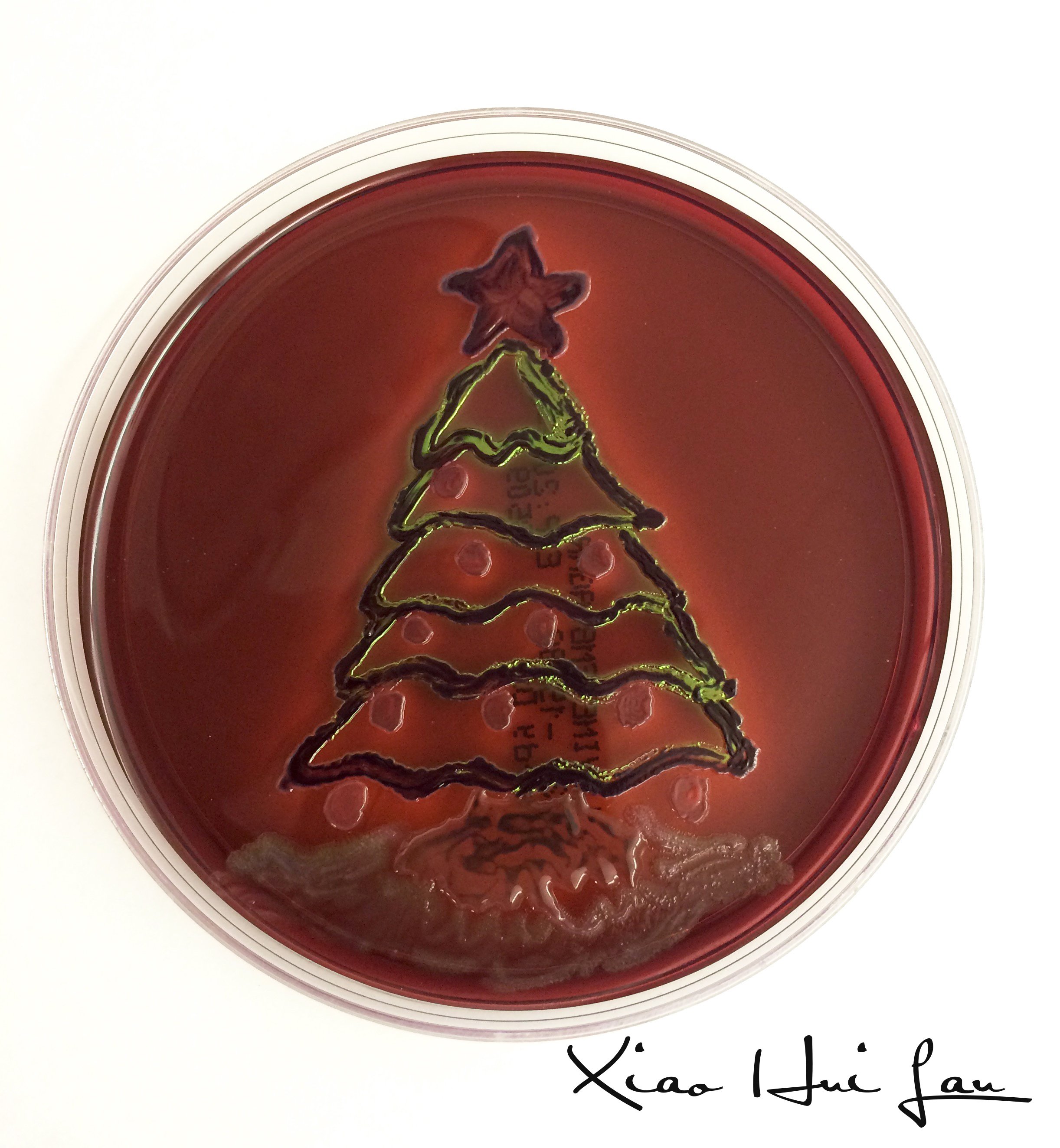
May I present you with an E. coli Christmas tree? It has a Enterobacter aerogenes star, Enterobacter cloacae ornaments, and a Klebsiella pneumoniae tree stump too!.
Xiao Hui Lau
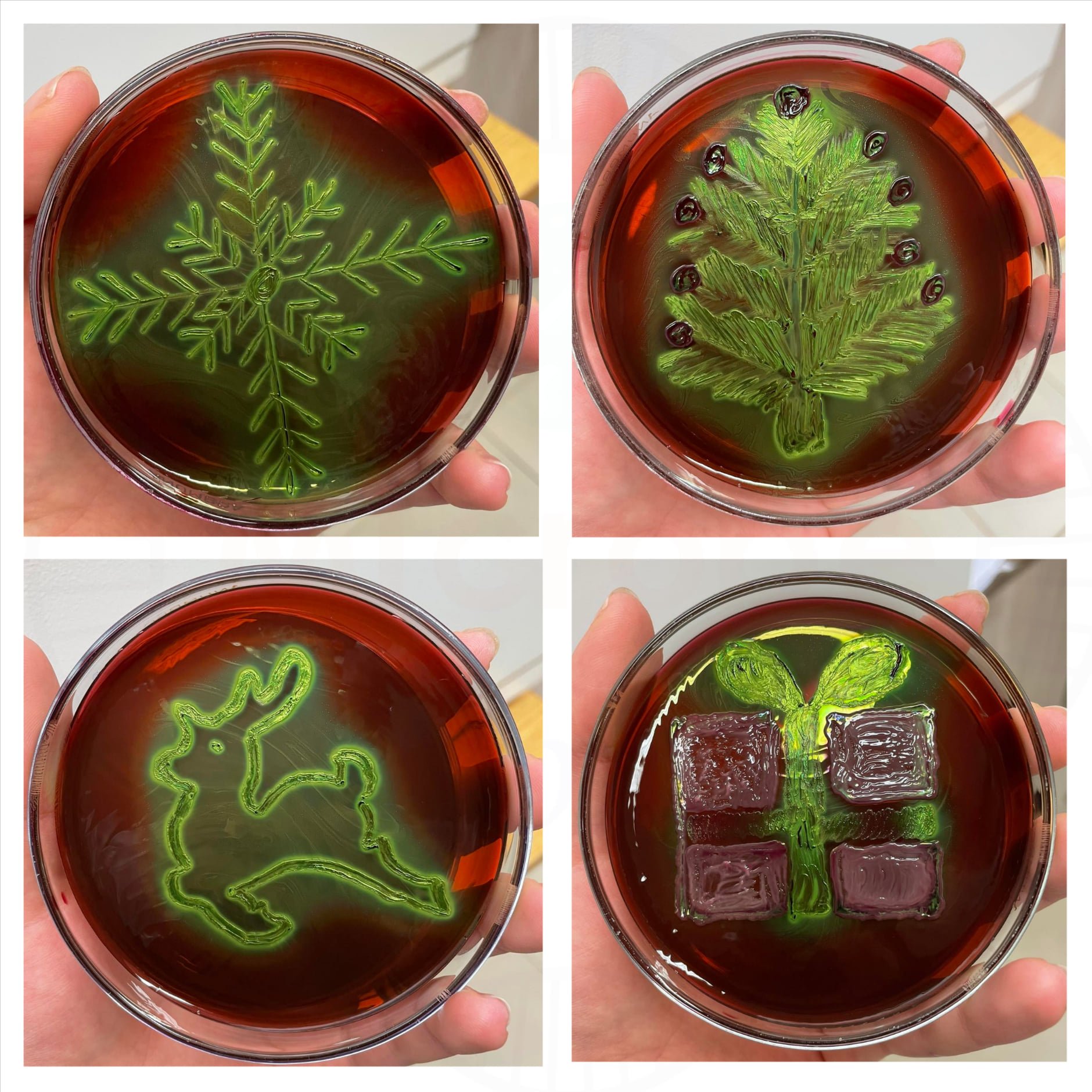
Escherichia coli and Klebsiella on Levine Agar (EMB).
Photo by Elena Ivanova from the Department of Microbiology and Virology, Medical University - Pleven, Bulgaria.
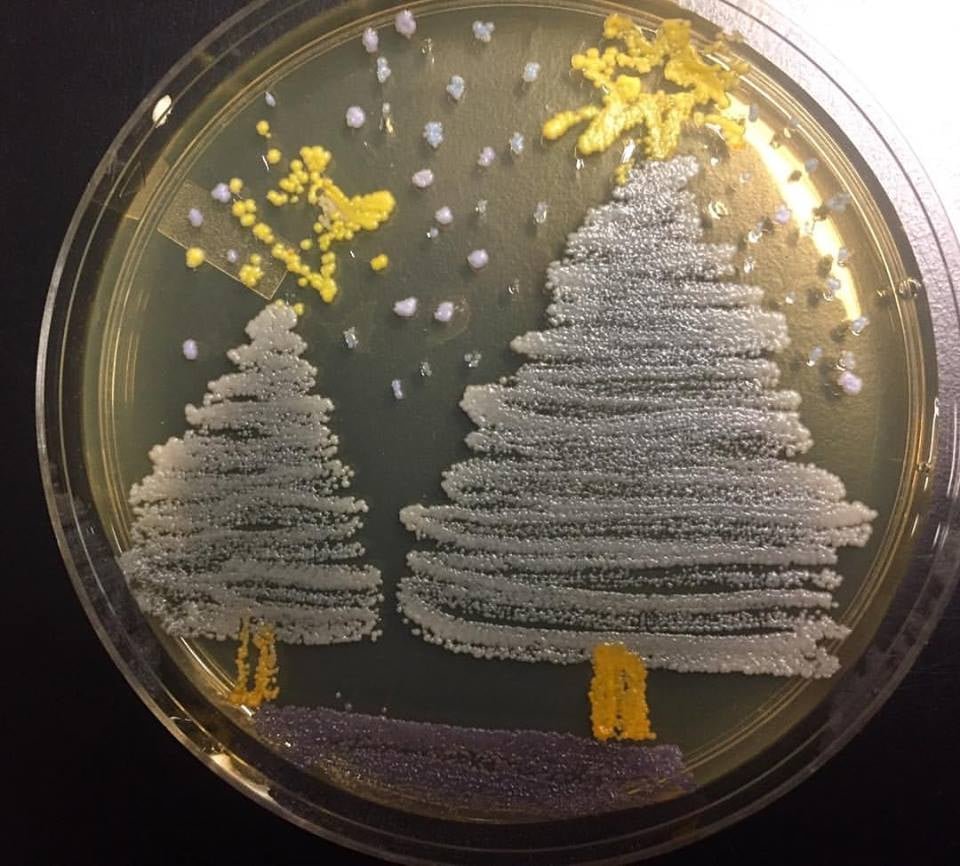
From: Microbe Notes
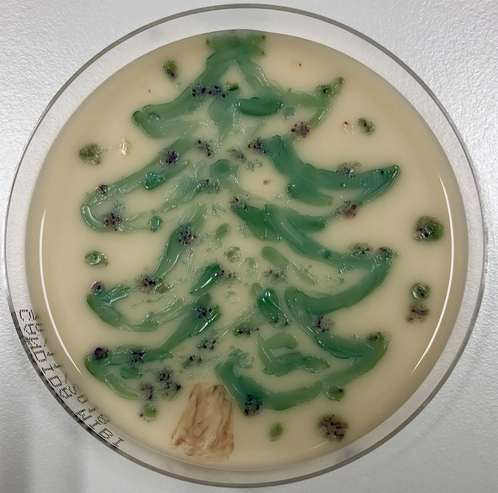
u/Sefiera Reddit
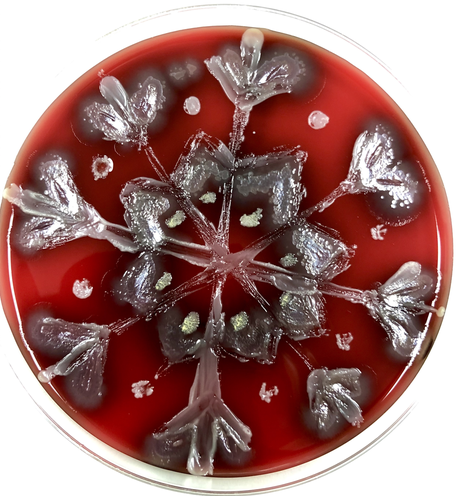
u/Sefiera Reddit
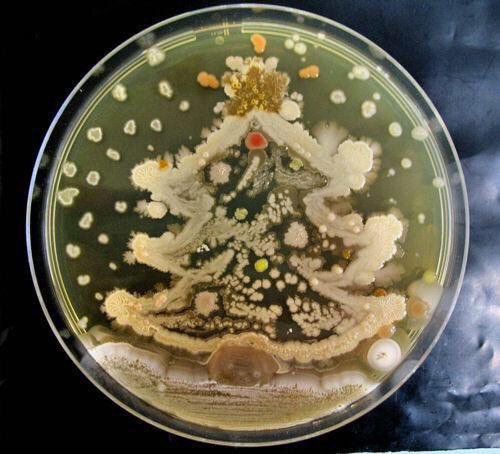
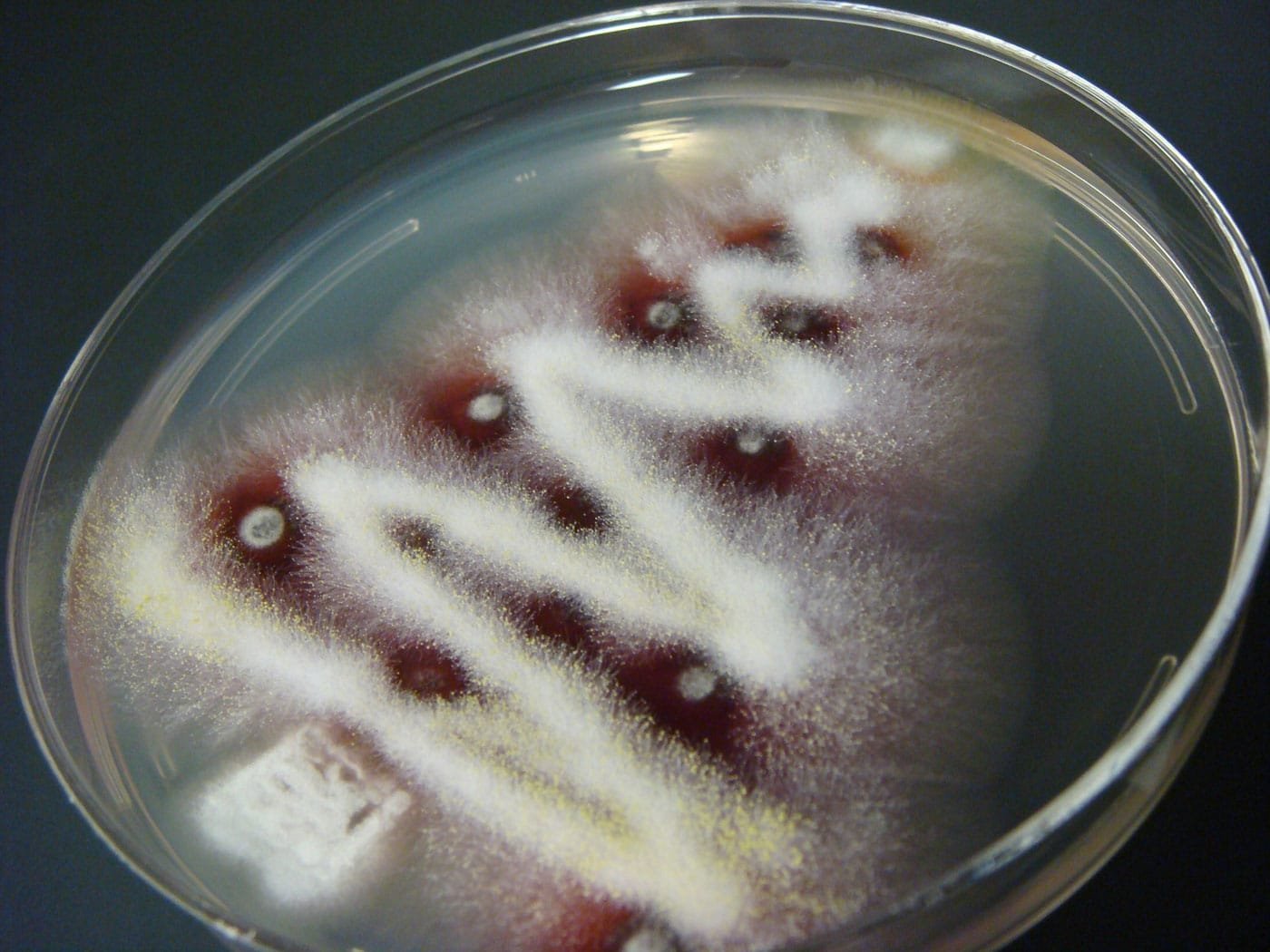







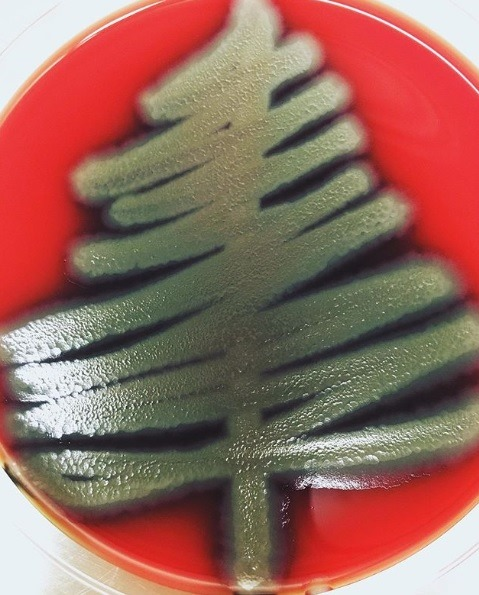


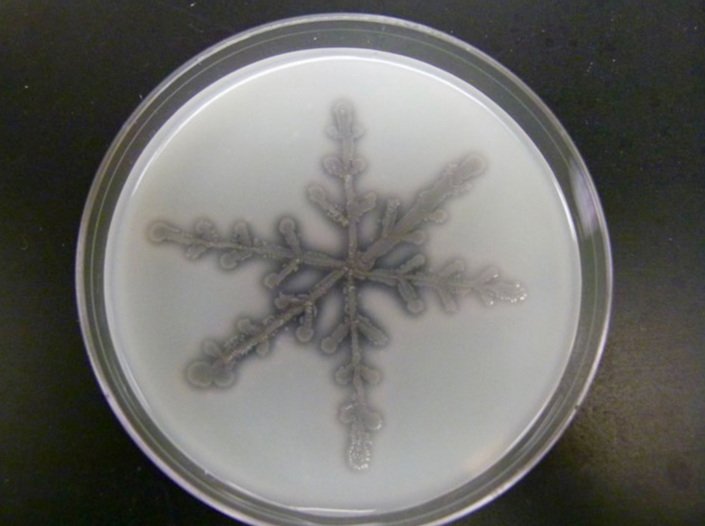



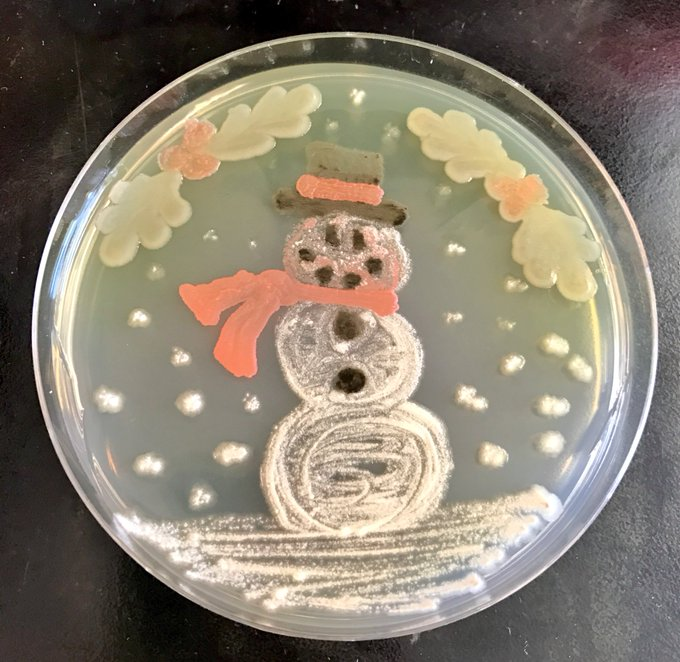


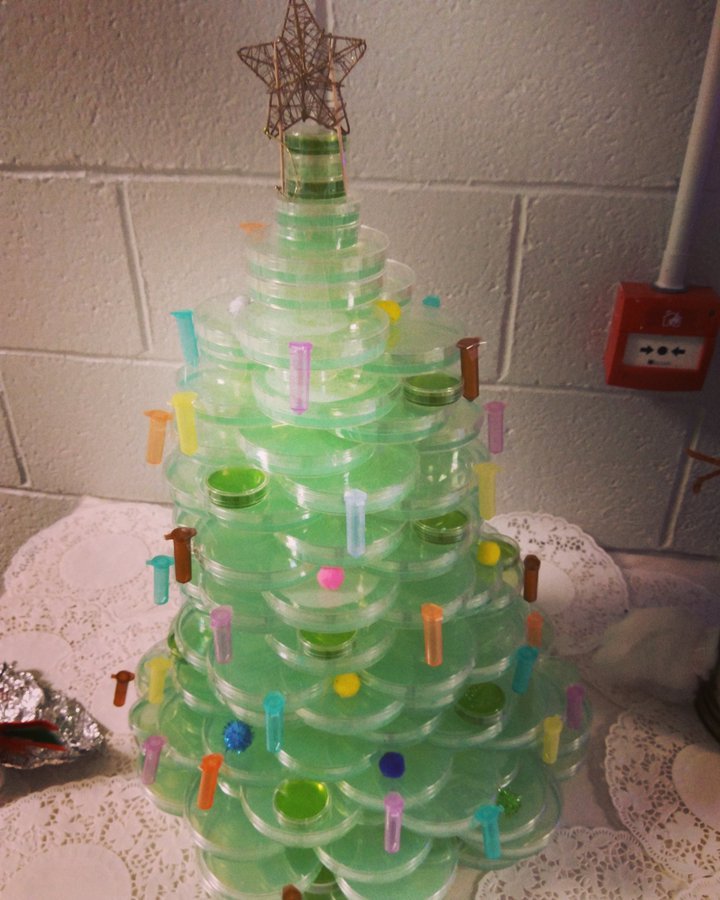
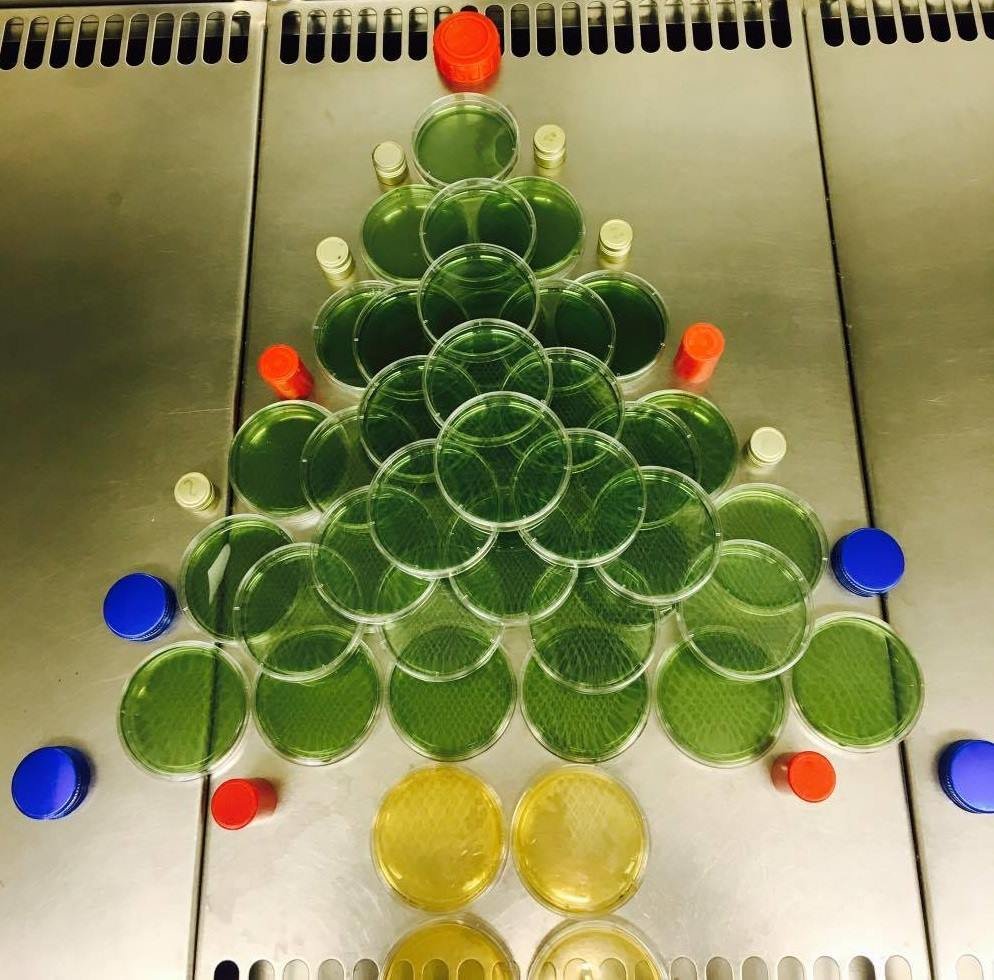
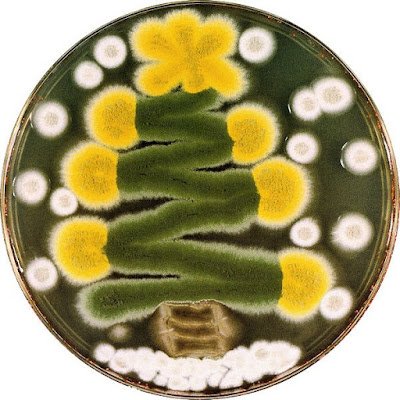


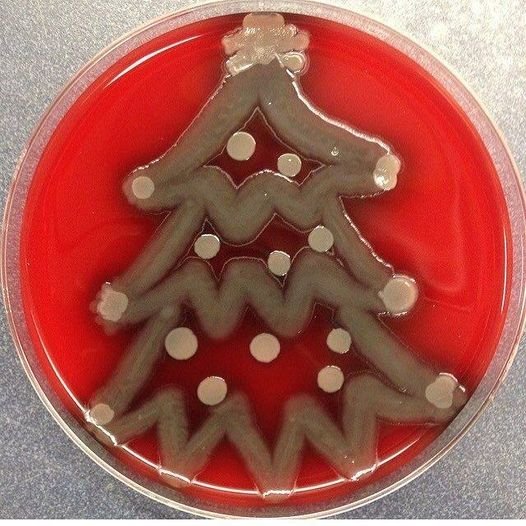



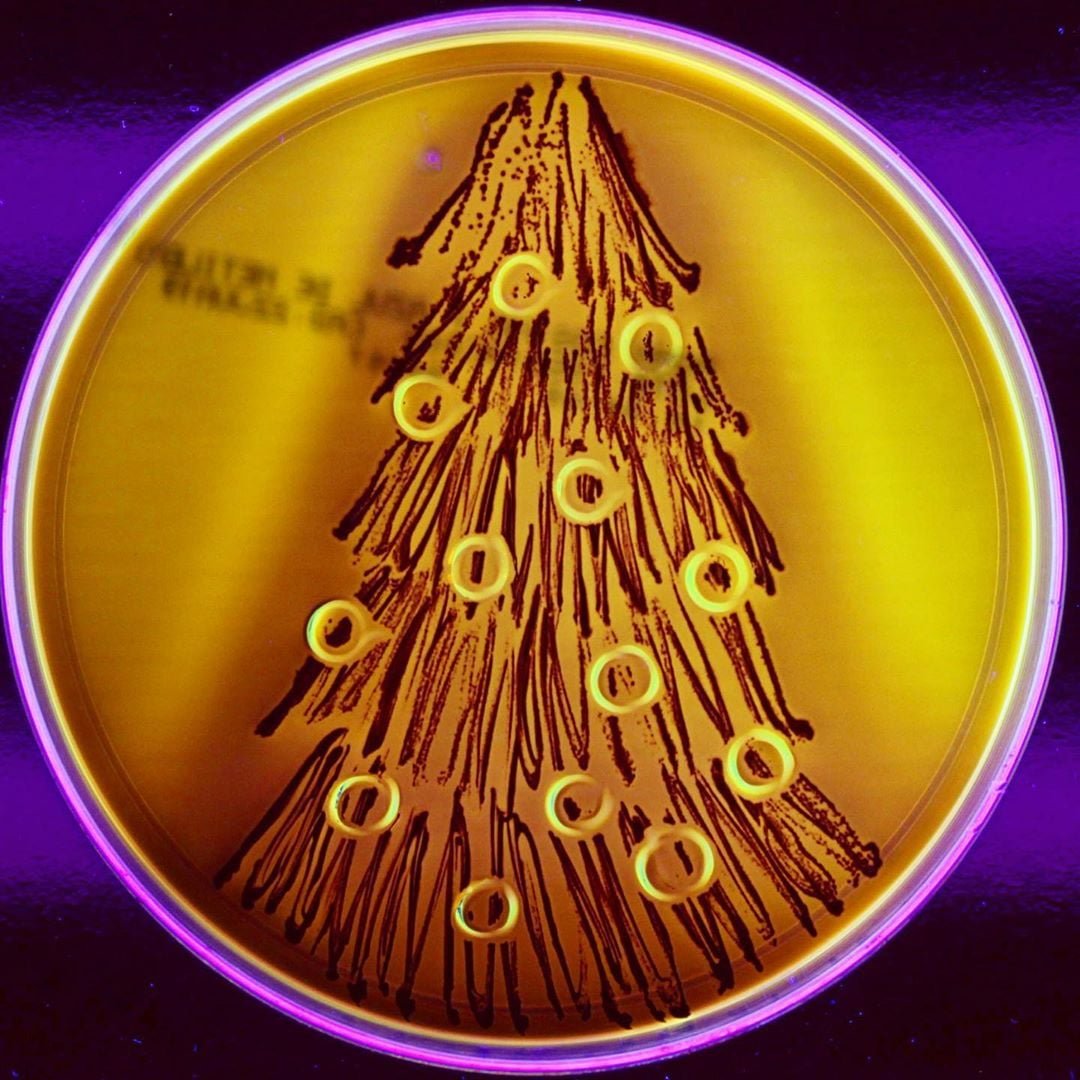
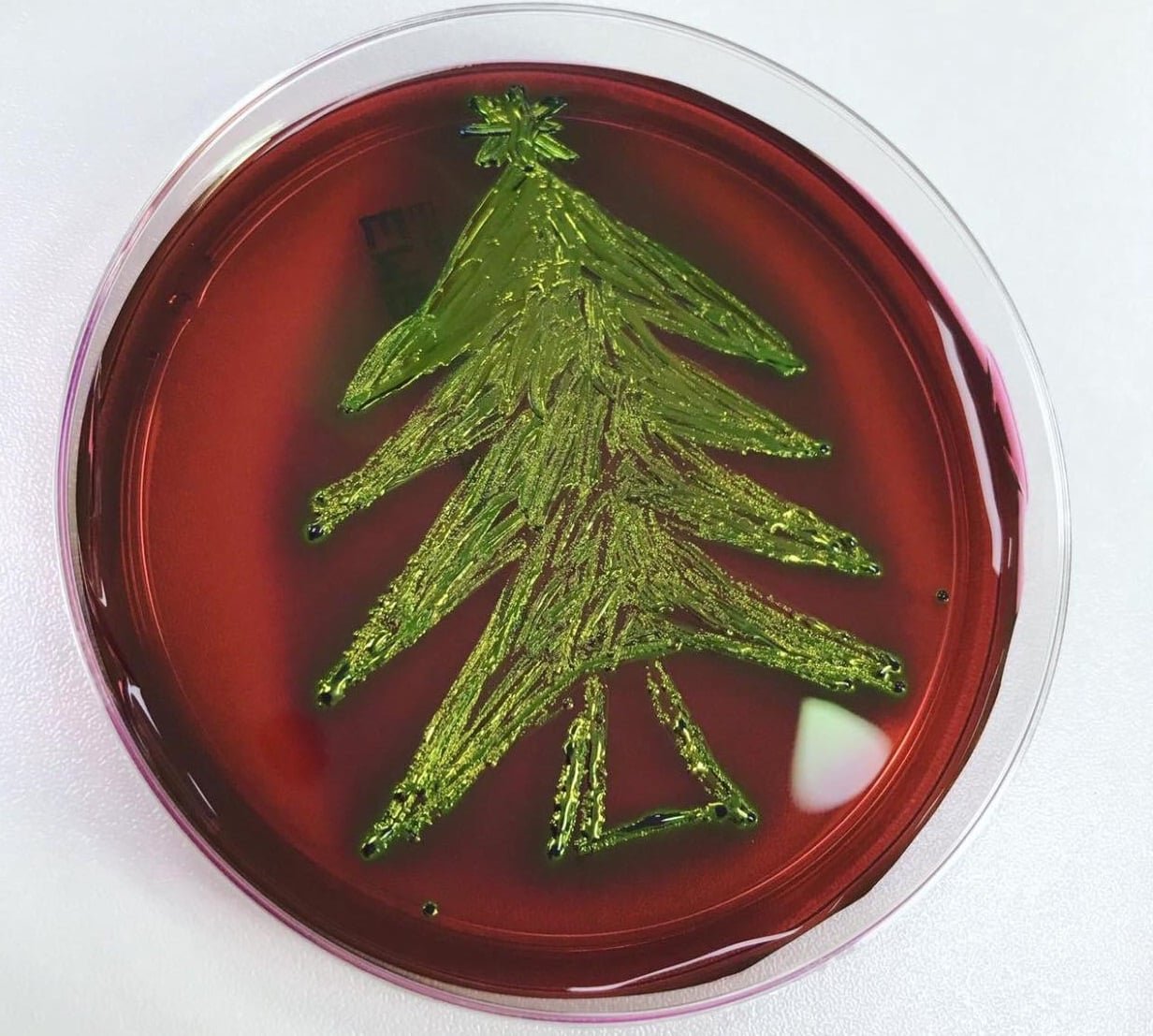
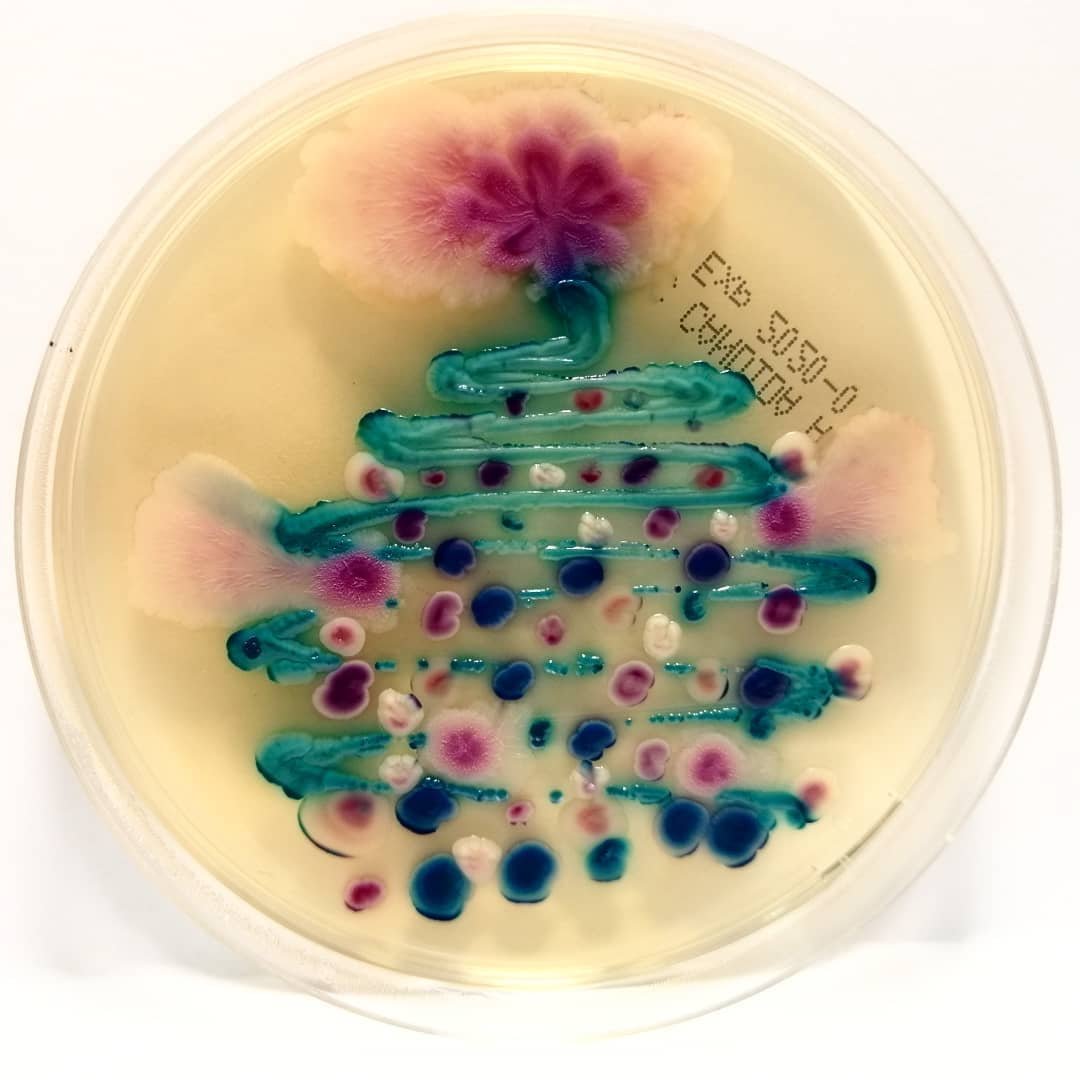
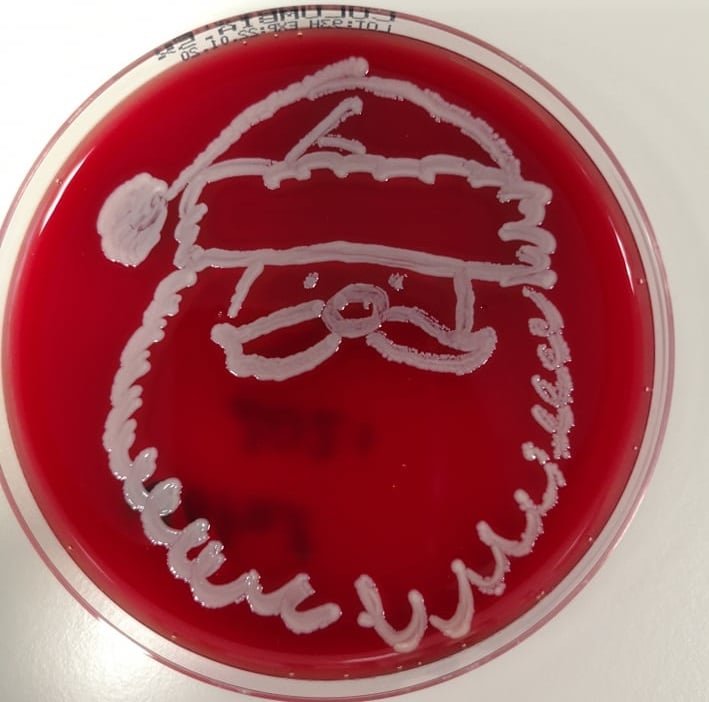
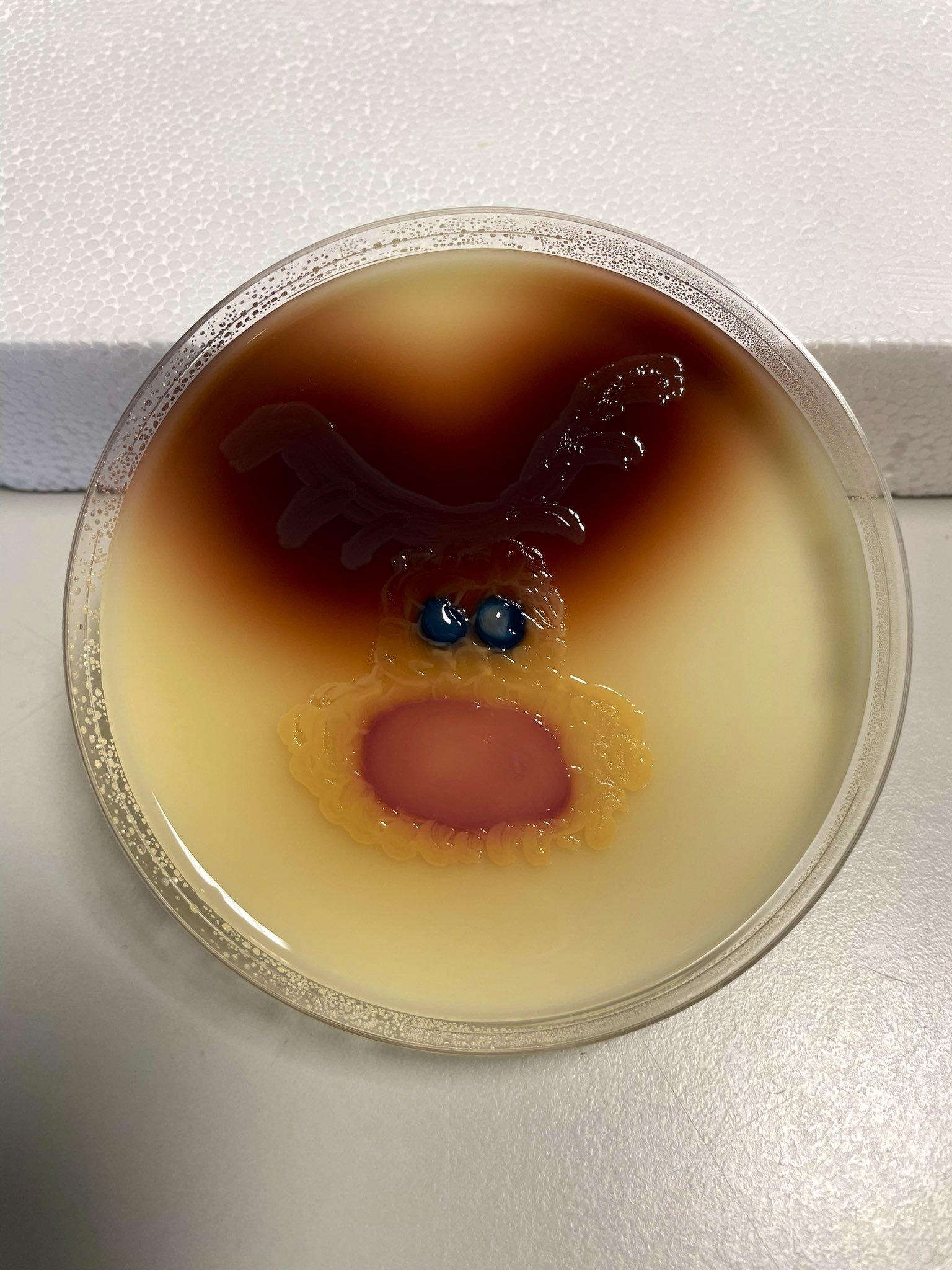
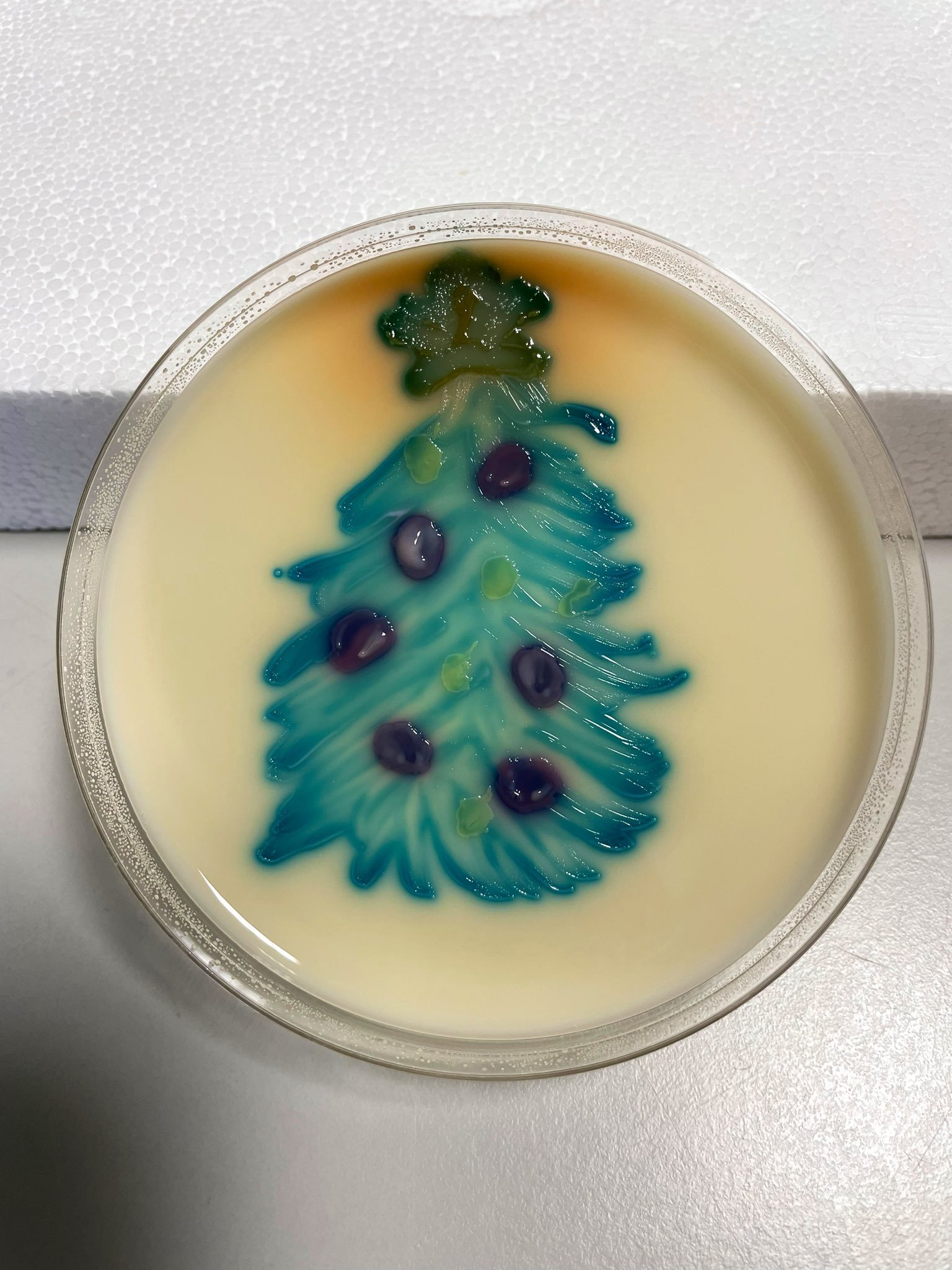
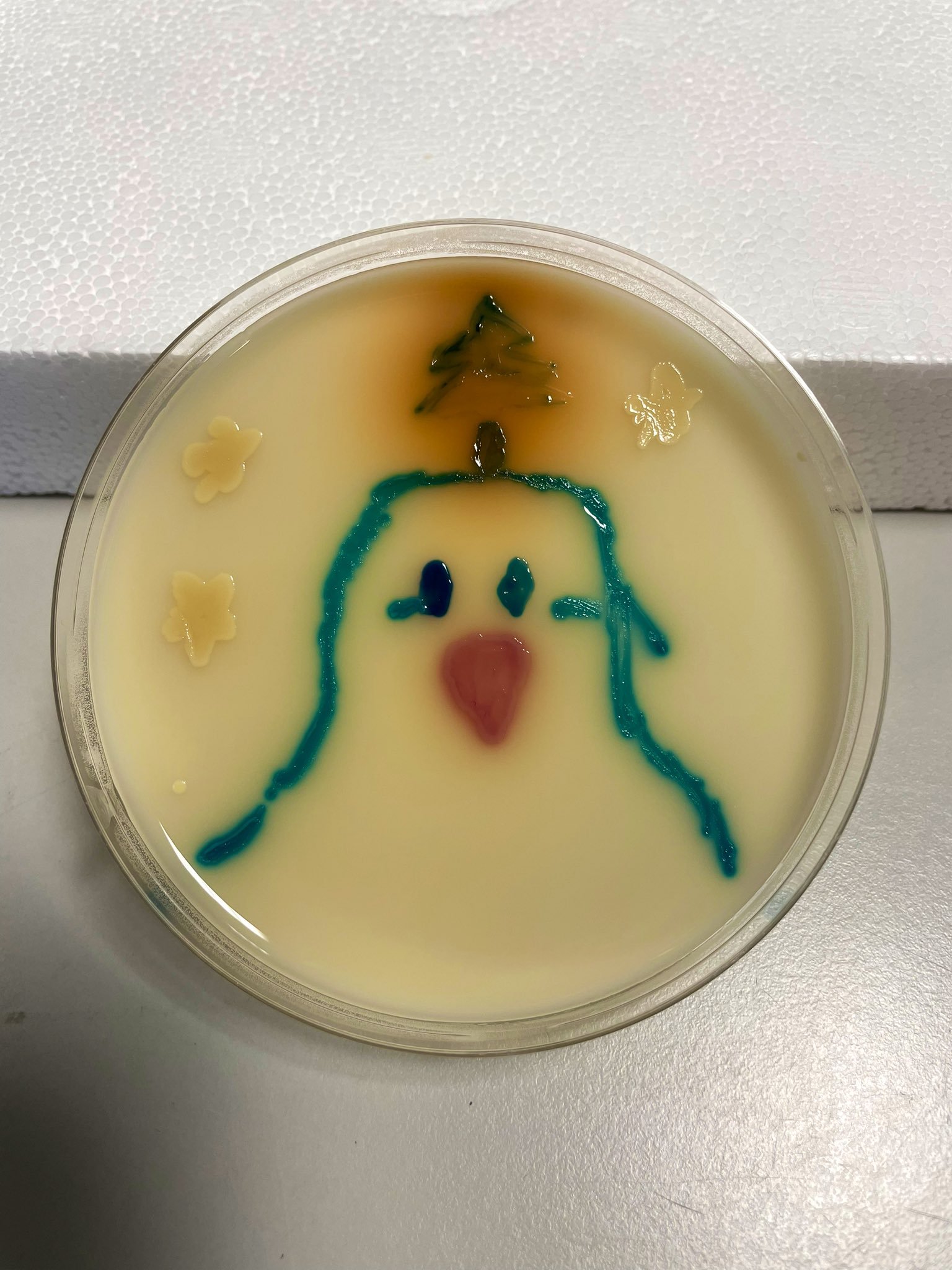
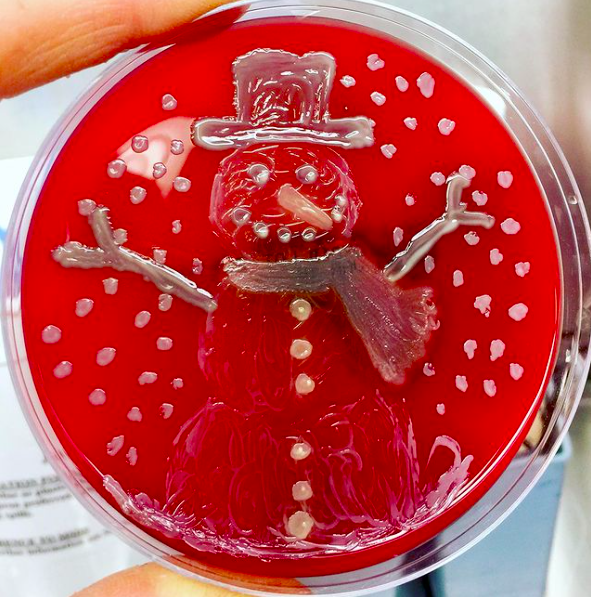
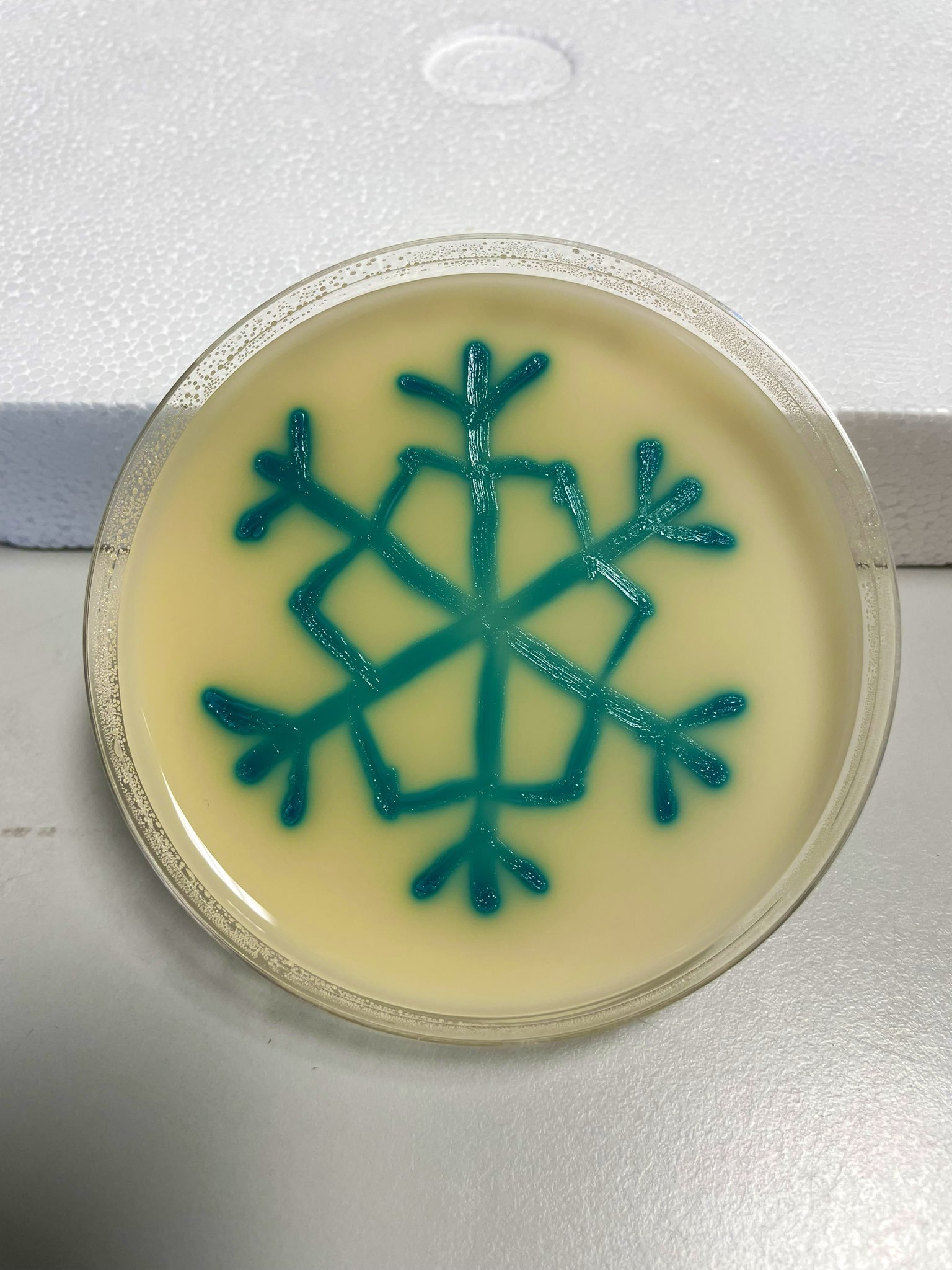
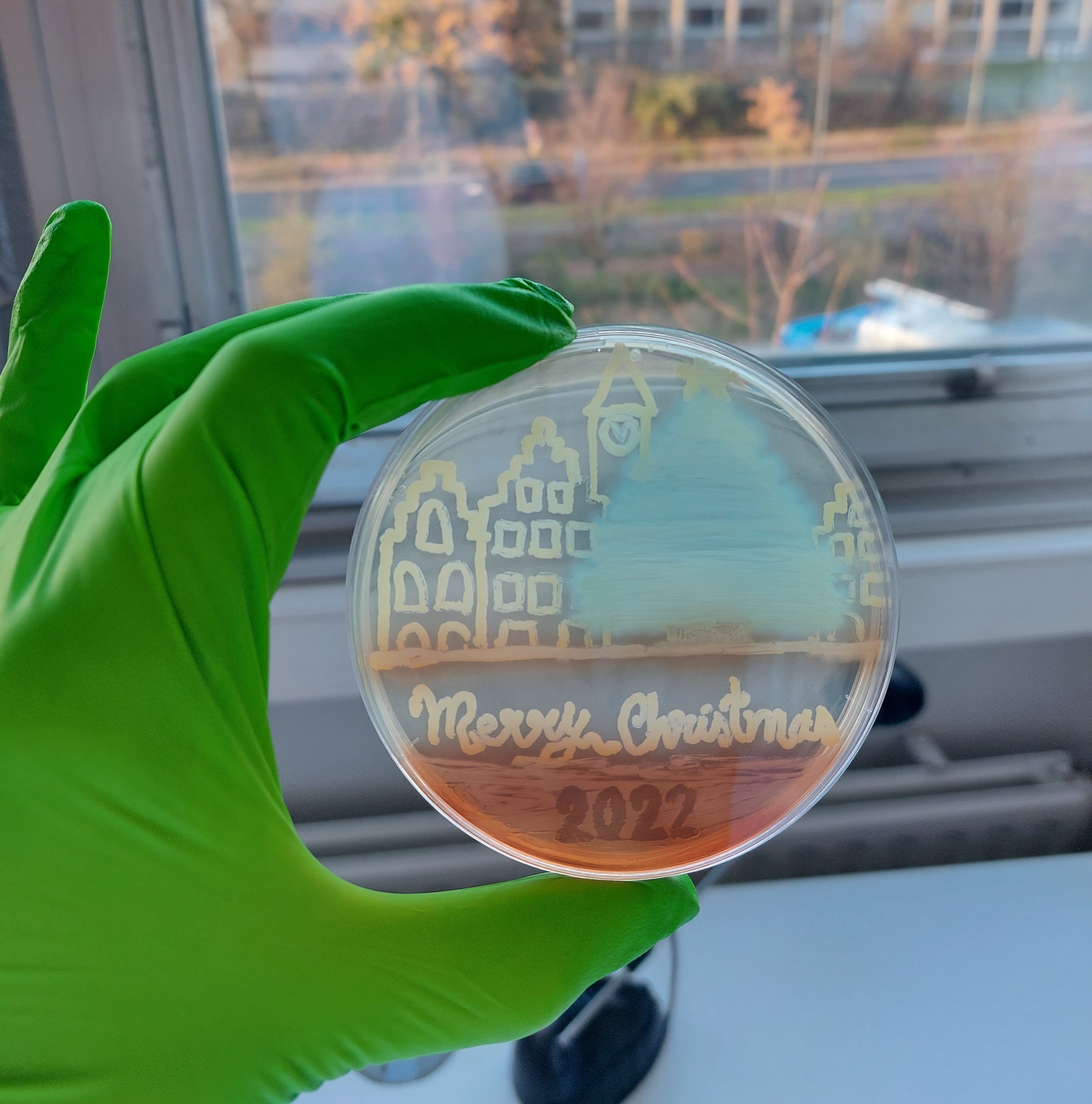
Matthias is Professor for Translational Immunology at Cardiff University where he leads a research group investigating the immune response to acute bacterial infections. He is also Academic Lead for Public Involvement and Engagement at Cardiff’s School of Medicine and a core member of the Superbugs team.
